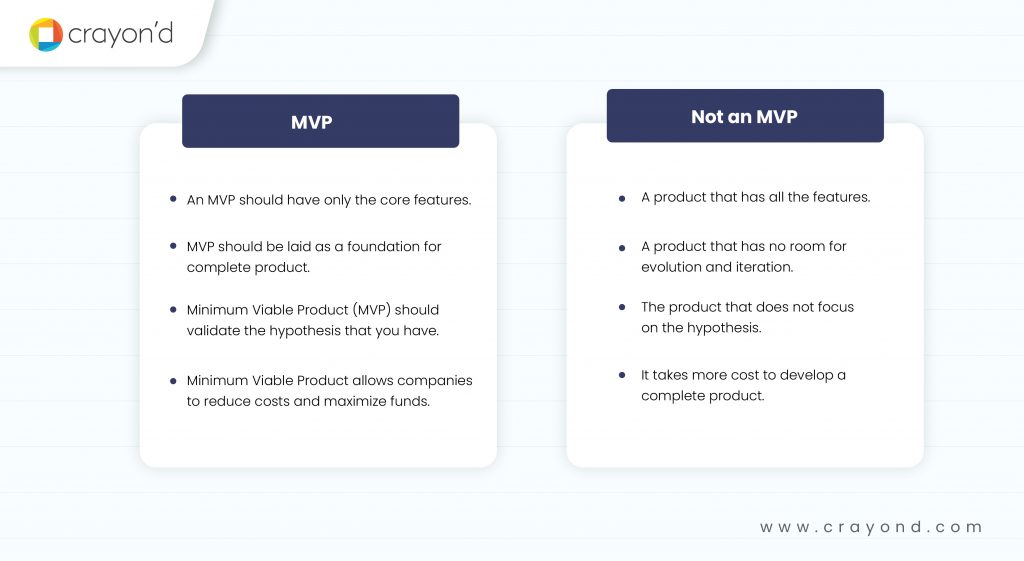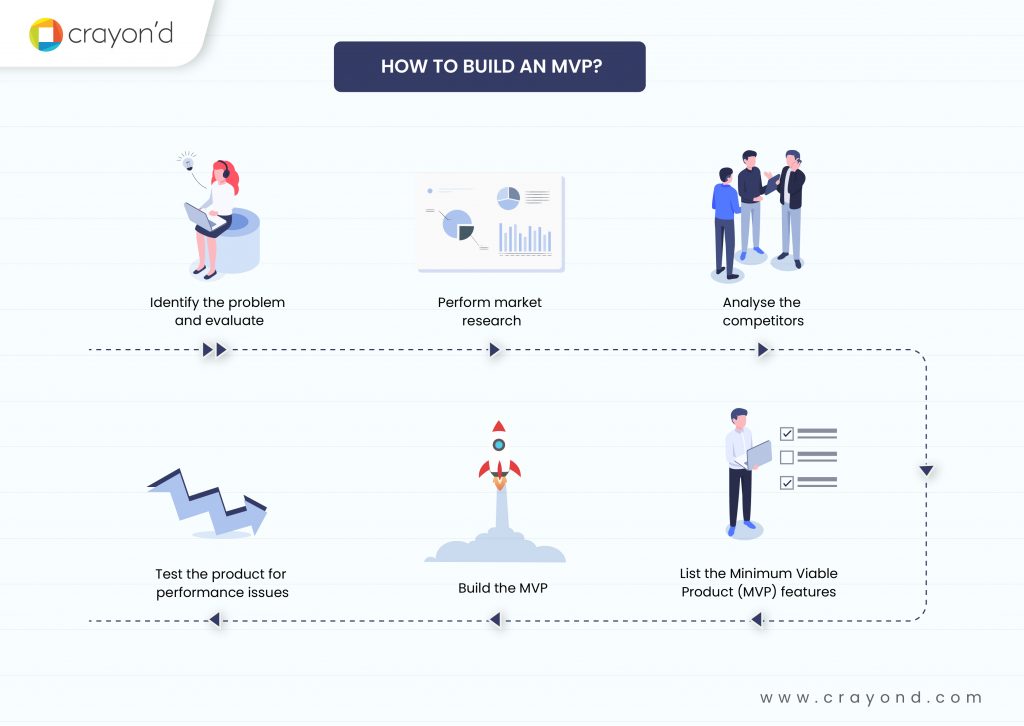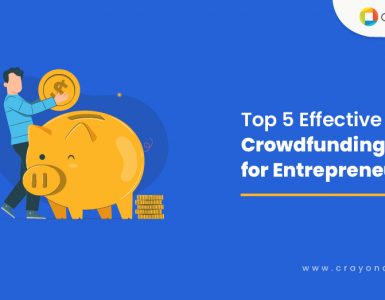One of the major problems that startups face now is the classic chicken and egg problem. Developers need feedback on the product that they are developing as and when they do but they are no customers to give feedback. Customers don’t want to choose a platform unless they see the product. This was quite the case until Steve Blank coined the term “Minimum Viable Product”.
“Minimum feature set (MVP) is a Customer Development tactic to reduce engineering waste and to get the product in the hands of Earlyvangelists soonest.”
Steve Blank
The term became famous once Eric Ries spoke about it in his book “The Lean Startup”.
“The minimum viable product is that product which has just those features and no more that allows you to ship a product that early adopters see and, at least some of whom resonate with, pay you money for, and start to give you feedback on.”

Basically, the Minimum Viable Product is the bone structure. It is the foundation of the product. Once the developers understand that this solves the proposed problem, they start building on top of it. This is a better approach for startups because they don’t spend all their resources on a product before it goes live. It also allows them to tweak the features on an iterative basis.
What is an MVP?
As Eric Ries in the book ‘Lean Startup’, a minimum viable product or MVP is a version of a “new product which allows a team to collect the maximum amount of validated learning about customers with the least effort.”
The stress is on the minimality — the most minimum effort that can give you maximum feedback.
You do not need a full-fledged app to tell you whether there is a need in the market.
Going down the route of creating polished things to find answers is just a time-drain.
If a product idea is truly valuable, then customers will appreciate it, no matter how you present it.
The key idea behind any form of an MVP or prototype — be it a landing page or a series of slides on Powerpoint — is gauging their reaction.
You can observe their actual behavior and level of interest first-hand and become confident.
What is MVP in software development?
Be it a bootstrapped startup or traditional company, an MVP has advantages to offer to everyone.
Hardcore software development practices use MVPs as part of their initial stages of ideation.
After all, a minimum viable product can help avoid and anticipate bottlenecks.
When an MVP is developed and demonstrated, it only has the essential features that solve the core problem.
This helps minimize the cost of the MVP and also ensures that your valuable time is not spent on building something that is unimportant.
It also works well with framing the product vision and go-to-market strategy of your product.
Minimum Viable Product (MVP) is all about delivering value to the users. This primary aspect of Minimum Viable Product (MVP) focuses on what the product does. In general, 60% of the features of a product are not used by all the customers. These features are most often viewed as mere add-ons. With Minimum Viable Product (MVP), the one core feature, which is the backbone of the product is tested to see if it meets the user demands.
Let us look into an example. Let’s say the problem that your users want to solve is to find a good house in India.
- Minimum: A house with a “for sale” sign in front of it.
- Viable: A website that lists the specs of all the houses available for sale, listed district wise.
- Minimum + viable: A list of offers manually collected from the owners.
Minimum Viable Product (MVP) should look something like this:


Why do you need a Minimum Viable Product (MVP)?
An Minimum Viable Product (MVP) helps you understand how your users perceive your product. Positive results indicate that the product is accepted and developers can continue enhancing it.
This helps you:
- Save resources and time.
- Check if the potential users find the product useful.
- Find out the key features that will add value to the product
- Enables user testing.
- Saves a lot of money and attracts investors.
How to build MVP?

Identify and evaluate
You need to first find the challenge. This is primary to any product that you develop. The next step is to define the audience. You need to spend considerable time doing your market research. What are the problems that the users are facing? Are there products that solve their issues? What is that product falling back on? Do you have a solution for that?
Let us see how Uber identified their challenges: After interviewing they found that:
- Yellow cabs were costly and not available easily.
- People had to wait for a long time to catch a cab.
- Users preferred staying indoors until the cab arrived.
Using these results, Uber built an app. The app now speaks for itself.
Analyzing competitors
Once you decide on the challenge, you need to look out for what your competitors are doing. Use services that give you insights on the competitor’s rank, website traffic, etc.

You can learn a lot from their strength and failures. Another way to look at this is that it gives you an opportunity to bridge the shortcomings of their product.
List the Minimum Viable Product (MVP) features
Sketch a user path. These are the steps that your user will take while using your product.
Next, choose the top features that should be available for Minimum Viable Product (MVP). These are the features that allow your users to understand and accomplish the main idea of your app. Now set, high priority features and make them available.

Testing
Testing the product is as important as everything else. It helps you understand if your product solves the problems that you intended it to. It helps you identify the shortcomings and performance issues. This gives you early insight into how your users would perceive your product. Every stage of testing is essential even for a small feature. You can use websites like ProductHunt to find the initial set of beta users who will be willing to try your product.
5 Successful Minimum Viable Product Examples
Dropbox
A pioneer in the niche of cloud storage and file sharing, Dropbox’s beginnings were out of a personal peeve.
Drew Houston would constantly forget to carry his pen drive on his way to work.
And he realized that there must be many people with this same issue.
Under the guidance of his investors, he decided to have a co-founder and also to build an MVP.
The MVP showed that many people were interested in such an idea. As Drew himself recounts, “It drove hundreds of thousands of people to the website. Our beta waiting list went from 5,000 people to 75,000 people literally overnight. It totally blew us away.”
Their explainer video is a really good example of how a minimum viable product should be.
Buffer
Not only did Buffer build an MVP, but they took the idea of validation and inverted it.
They used the MVP to source the validated idea.
Similar to Dropbox, instead of working on an actual app, they created a landing page.

What’s more: they used this to perfectly segment their audience into personas, and then asked them further questions.
This helped them build the product just how their users wanted it.
Spotify
As the definition puts it, the minimum viable product should focus on the core features.
This is exactly what Spotify did.
Around 2008, the founders, Daniel Ek and Martin Lorentzon understood that people were tired of downloading and sorting music on their own.
This was a huge market opportunity, especially considering the rise of smart devices like the iPod.
However they did know that they could not enter the market without validating their idea.
To test whether people were even remotely interested in the idea of “streaming music”, they built a lo-fi desktop app and ran closed beta testing.
The MVP with its freemium price model proved to be exactly what people wanted.
Simultaneously, the startup spent time on signing even more artists and developing mobile apps.
This helped them use their first-mover advantage and gain a foothold in the industry quite quickly.

Uber
Frustrated by the costliness of cabs in San Francisco, Garrett Camp and Travis Kalanick decided to build an alternative.
Pretty soon, they embarked on a cool idea: an app that would match drivers with passengers.
But, it was 2008, and people were not just warmed up to the idea of using apps.
What did they do instead?
They launched their product as an MVP, ‘UberCab’, that worked only on iPhones and was only available in San Francisco.
Pretty soon, it became obvious that their ride-sharing idea was going to be a hit.


Airbnb
San Francisco is quite an expensive city, and as seen from Uber’s example, there are always people looking for cheaper alternatives.
Brian Chesky and Joe Gebbia were finding it hard to pay the exorbitant rent.
Part of the reason it was expensive was the middle men, who negotiated between the house and the tenants.
Chesky and Gebbia thought if they could remove the middle person.
Instead of developing a fully-functional website, they created an MVP: a basic website with the photos of their own apartment.
Pretty soon, people who visited San Francisco for conferences and short meetings started using Airbnb to find places to rent.

What is not a Minimum Viable Product (MVP)?
The product that is not minimum
Most often product managers find the idea of a Minimum Viable Product (MVP) to be too encouraging and encourage developers to add more features to it. The result is an almost complete product. This kills the concept of a Minimum Viable Product (MVP). When the product is almost done, it is difficult to change the core functionalities. If the result of your Minimum Viable Product (MVP) is low, then you might have to change the core functionalities. This is what you aimed to achieve using Minimum Viable Product (MVP) as well. But when the product is complete, you cannot do this. As a result, you will end up only tweaking the changes.
You will try to fill in the gaps by adding more features that complement the existing ones. This is going to cost you a lot of time and resources.
The Product that is not evolutionary
Minimum Viable Product is an iterative process. This means you keep adding value to the bucket with every release. The idea is to build upon a foundation that is laid using Minimum Viable Product (MVP).
The product that does not focus on the hypothesis
Most often, people forget why they are building a minimum viable product. The essence of building a Minimum Viable Product (MVP) is to ensure that our assumptions are not. What happens most of the time is that, instead of using Minimum Viable Product (MVP) to validate the hypothesis that you have, you assume that it is correct. Instead of using Minimum Viable Product (MVP) to validate the concept, it is used to test a particular feature set.
Benefits of Minimum Viable Product
Winning the hearts of stakeholders
Big ambitions require capital.
While a product idea might have huge potential, convincing investors about the same is never going to be easy.
Called the ‘buy-in’, a minimum viable product that gets accepted by the market shows the investor proof that your idea is worth it.
They get enough confidence to buy in and support your ambitions.
MVPs can also convince skilled people to join your workforce.
Talented people are constantly on the lookout for exciting and meaningful projects — and if they see that your MVP is making waves, then they would surely want to work with you.
Hiring gets easier, as you can see.
Testing new ideas
The biggest benefit of developing an MVP is that it allows startups to test their business and product ideas.
By building just the core set of features rather than a feature-heavy product, organizations can verify if their product concept resonates with their target audience.
The product launch would further show what types of social groups are the most active users, and how they interact with the product.
These insights can be used to tailor app functionality to suit these users more.
This is much harder to do with a feature-heavy product, wherein you would need to essentially rebuild the whole thing from scratch.
As seen above, Instagram is a good example for this.
After their initial launch, they realized that users were more interested in the photo-sharing module — and they wasted no time to pivot.
Validating market demand
A minimum viable product is all about testing to see what works and what doesn’t.
It helps you achieve an understanding of the market demand,
More than acquiring customers, it shows startups if their product fulfills a specific user-need; which may not be the case as either the need doesn’t exist, or solutions already in the market address the pain point.
This, an MVP can be seen as an inexpensive reset button.
The moment you realize that the market does not exist, you can save your efforts and divert them to markets that do exist.
Usability testing
Building a product that drives engagement right off the bat is quite difficult.
This is because the initial version of the product is built with the minimum of user feedback.
Only when the product launches and gets used by thousands, you get a sense of what actually works.
A minimum viable product, then, is a shortcut.
You place it in front of your customers and you can immediately observe which parts of your solutions cause friction.
This is a key aspect in design sprints as well.
3 Simple MVP Hacks for Product Growth
A product idea meets less pursuing risk at a point called MVP. MVP’s presence ensures that no great idea is lost in the fear of failure. When MVP does this biggest favor, you need to ensure to make use of it the right way. Here are a few MVP hacks,
Build a landing page
Reaching more customers can help you improve your MVP as well as get more signups. The wider reach helps you once you build on the MVP and launch it. And for that, the landing page is the right tool. Design your landing page in a way that speaks for your MVP and entices the visitors.
Feedback and iterate
MVP’s advantage is that you can commit mistakes and improve. You are allowed to experiment in your MVP. But what decides your growth is how you keep up with the measure-learn-build loop. Your landing page will bring in a number of feedbacks. Keep track and improve your MVPs based on these inputs.
Know your competitors
Knowing your competitors is an important part of building an MVP. When you know you have a good number of competitors, you can be happy that there’s a market for your product idea. However, there’s also a need to stand unique amongst the others. Incorporating your differentiation right from your MVP development is crucial. And being aware of your competitors is the key for that.
Bottom line:
Minimum Viable Product allows developing companies to reduce costs and maximize funds. It allows entrepreneurs to learn quickly from their mistakes without paying a large tuition fee. The approach when done correctly gives an early insight on how the users will perceive the product and what value-added features the company can take up to make it a success. It also helps them identify a strong set of features that they can later use in their sales and marketing efforts. That said, Minimum Viable Product (MVP) is upfront work. Although it might seem simple, product managers need to invest time to understand how they can incorporate this technique and get the maximum out of it.
Need help with developing a Minimum Viable Product (MVP)? At Crayon’d we have built a lot of Minimum Viable Product (MVP) projects focusing on websites, apps, etc.
Have more questions on Minimum Viable Product (MVP)?
Reach out to us. We are open to always having a constructive conversation. Head over to Crayon’d. We will take off your idea from there.







Add comment